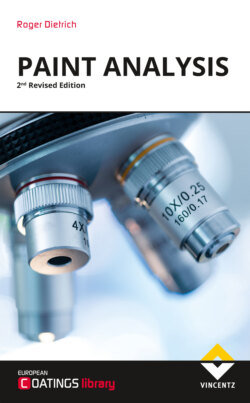Читать книгу Paint Analysis - Roger Dietrich - Страница 9
3Relevance of modern analytical techniques to paint analysis
ОглавлениеThere are hundreds of techniques for analysing paints and coatings. They yield information about viscosity, gloss, haze, hardness, acid value, etc. In other words, they describe the product and its properties. They ensure that the desired level of quality is achieved. On the other hand, standard analytical tools often fall short when failures and production problems arise. The standard techniques are perfect for checking the quality of a product. However, if a product is defective and the root cause has to be investigated, the standard techniques are not very helpful. For example, a monomolecular layer of a release agent on the surface can easily cause severe adhesion failure if the material is to be painted. The quantity of substance may be too low to be detected by standard techniques. Poor cleaning procedures in a paint shop can also cause paint defects of a few microns in size. Before this problem can be solved, it is necessary to know what has caused the paint defect. The substance or inclusion particle causing this failure is too small to be characterised by standard techniques.
This is an analytical gap that can be closed by the surface analytical techniques described in this book. They will help to answer the question:
Why does a product have unexpected properties and why do failures happen?
Typical topics in paint analysis are:
What do contaminants in paint layers or wet paint samples consist of?
What is the chemical composition of paint layers at a certain depth from the surface?
How are chemical bonds formed between paint components?
Why does a paint layer peel off a substrate and where does the delamination take place?
What is the reason for paint spots?
It should be mentioned that there is no all-embracing technique that can answer these questions. In fact, there are many parameters which influence the decision which technique to employ for the analysis, including:
additional information about the appearance of the defect
preliminary sample investigation by optical light microscopy
chemical and physical properties of the coating
desired detection limit
In other words, it takes an experienced user to find the best tool that can answer the questions raised about the sample. These considerations will be discussed later in this book.
